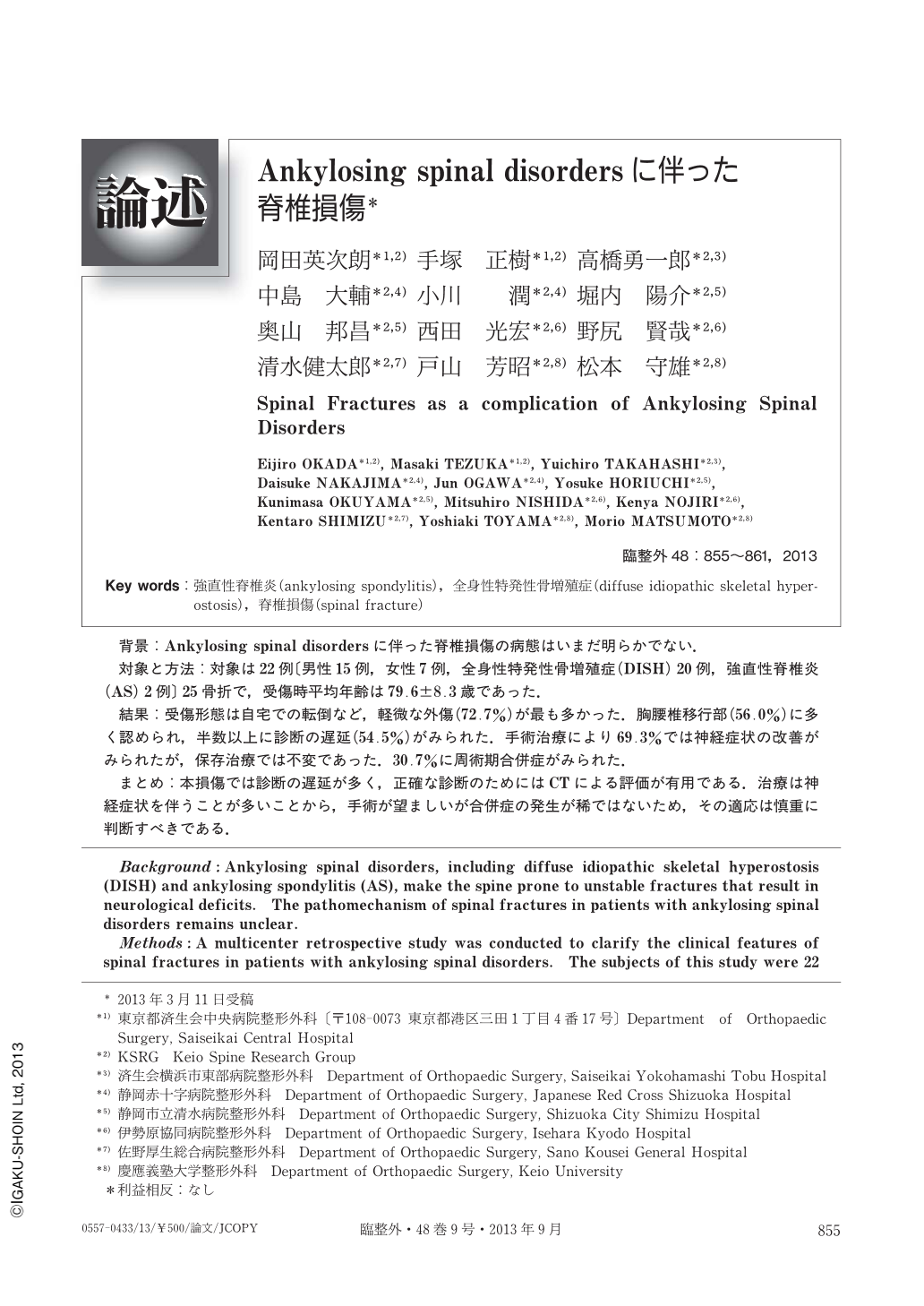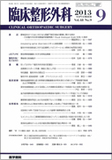Japanese
English
- 有料閲覧
- Abstract 文献概要
- 1ページ目 Look Inside
- 参考文献 Reference
背景:Ankylosing spinal disordersに伴った脊椎損傷の病態はいまだ明らかでない.
対象と方法:対象は22例〔男性15例,女性7例,全身性特発性骨増殖症(DISH)20例,強直性脊椎炎(AS)2例〕25骨折で,受傷時平均年齢は79.6±8.3歳であった.
結果:受傷形態は自宅での転倒など,軽微な外傷(72.7%)が最も多かった.胸腰椎移行部(56.0%)に多く認められ,半数以上に診断の遅延(54.5%)がみられた.手術治療により69.3%では神経症状の改善がみられたが,保存治療では不変であった.30.7%に周術期合併症がみられた.
まとめ:本損傷では診断の遅延が多く,正確な診断のためにはCTによる評価が有用である.治療は神経症状を伴うことが多いことから,手術が望ましいが合併症の発生が稀ではないため,その適応は慎重に判断すべきである.
Background:Ankylosing spinal disorders, including diffuse idiopathic skeletal hyperostosis (DISH) and ankylosing spondylitis (AS), make the spine prone to unstable fractures that result in neurological deficits. The pathomechanism of spinal fractures in patients with ankylosing spinal disorders remains unclear.
Methods:A multicenter retrospective study was conducted to clarify the clinical features of spinal fractures in patients with ankylosing spinal disorders. The subjects of this study were 22 patients with 25 fractures (15 males, 7 females;20 with DISH, 2 with AS). Mean age at the time of the fracture was 79.6±8.3 years.
Results:The cause of the fracture in the majority of cases (72.7%) was a fall at home. The thoracolumbar junction was the level of the spine that was most frequent site of the fracture (56.0%). Diagnosis was delayed in 54.5% of the patients. Surgical treatment of the fracture improved the neurological status of 69.3% of the patients, and there was no improvement in the patients treated conservatively. Perioperative complications occurred in 30.7% of the patients.
Conclusion:CT scans are helpful in evaluating spinal fractures in patients with ankylosing spinal disorders. Surgical treatment is desirable to improve patients' neurological status, but the indications for surgery should be carefully considered because of the high incidence of perioperative complications.

Copyright © 2013, Igaku-Shoin Ltd. All rights reserved.


